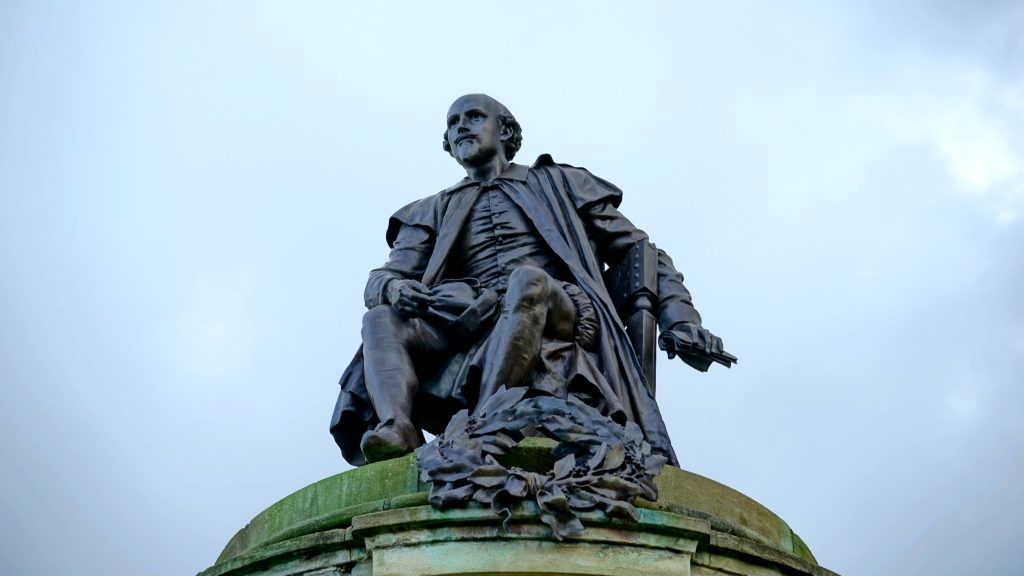Characteristics of Middle English Literature
“Middle English literature” refers to English literature that developed during the roughly 300-year period from 1066 AD to around 1485 after the Angles, Saxons, and Jutes (aka the Anglo-Saxons) settled in England in the latter part of the fifth century and eventually gave the country its name and language. During this period, English gained widespread popularity among people in every stratum of society. Gradually, the language gained maturity, and by the late 1300s, Chaucer’s poetry made English the perfect medium for literature.

1. The Transition
In many ways, the period is that of transition and of experiment. The poets appear in parts to be feeling for new mediums. The influence of the French and Latin works is undoubtedly great, however at the same time, there are some poets who are following the line of development from the Old English Period. It is clear that oral tradition preserved the poetic models of the past, though apart from obvious examples it is not till 14th century that they appear in extant texts.
2. The Anonymous
The anonymous nature of the works or writings is still strongly evidenced. A large proportion of the works are entirely without known authors
3. The Domination of Poetry
Much of the surviving work of the period is poetry, which is used for such fields as history, divinity, and science.
4. Development of Literary Forms, Poetry and Prose
(a) Metre: One of the main features of this period is the development of rhymed metres.
(b) Lyric: Lyric is also developed in this period. Many of the early lyrics were religious in theme and tone, especially noteworthy being those addressed to the Virgin Mary. On the other hand, the secular lyric is represented too. However, it is difficult to separate religious and secular lyrics for its is clear that there is much mutual influence between them.
(c) Romances: The break with the old English literary tradition appears perhaps most strikingly in what became the most popular genre in medieval England—the Romance.
Having originated in France in the 1100s, most romances describe the adventures of legendary knights and celebrate a chivalric code that emphasize courtly love—in which a man’s love of one idealized woman makes him a better person. The heroes of romances are admirable men who, nevertheless, share the feelings and weaknesses of ordinary humans. The heroes of Old English literature can seem, by contrast, superhuman and impossibly perfect.
Working in both verse and prose, many English writers produced romances about the legendary King Arther, the War of Troy, and the mythical deeds of Charlemagne, and of Alexandar, the Great.
The most acclaimed verse romance of the period is Sir Gawain and the Green Knight, written in the 1300s by an unidentified poet. Its verse form evolved from the Old English practice of alliteration, or the repetition of sounds in a sequence of nearby words. It relates a comic adventure in which Arther’s finest knight undergoes a humiliating test of character. Another outstanding Arthurian romance, also written in skillful alliterative verse Le Morte d’Arthur (The Death of Arthur). It describes king Arthur’s legendary conquests and his eventful fall. The poem became a source for sir Thomas Malory’s prose version of the Arthurian legends, Le Morte d’Arthur (completed around 1470), possible the finest single work of Middle English prose.
Jean Bodel categorized the romances as follows:
- Matter of Rome
- Matter of France
- Matter of England
- All the romances in the Matter of Rome deal with Alexandar—the Great, Trojan Wars, Siege of Thebes, and adventures of Aneas.
- Among all the matters, the Matter of France is the earliest. They deal with Charlemagne and his peers. It was first recorded in French and then translated into English. Hero is Charlemagne, who appears as the champion of Christians, against the infidels, but as the cycle grows, the interest shifts from Charlemagne to the knights. The example is La Chanson de Roland [The Song of Roland], in which Ronald, the hero, fights a desperate war against hopeless odds and dies in the end.
- The famous romance in the Matter of England is the Sir Gawain and the Green Knight written in the second half of the 13th century. Morte Arthur, the typical of the Matter of England deals with King Arther and the knights of his round table.
Among the Matter of England, King Horn is the earliest one, dealing with the theme of exile and return.
(d) Introduction to Rhyme Scheme: A fruitful influence of French is the introduction of Rhyme scheme, into the English literature, which leads to the literature of Middle Ages mellowed with poetic composition. All the historical, religious, and other kinds of writings which had been prose in the Anglo-Saxon times, is recorded in the poetic form during the Middle Ages.
- Ormulum by Ormin (1200) paraphrases the first four Gospels of the Bible with slight additions.
- Genesis and Exodus is a manuscript (a handwritten record) about the creation of the world to the death of Moses, written in rhymed couplets.
- Cursor Mundi is another manuscript intended for instructions.
- Handling Synne is collection by Robert of Bruno, of tales and anecdotes illustrating the vices and weaknesses of man.
- The Owl and Nightingale is different, as it is in the form of debate.
(e) Alliterative Form: Another important and remarkable feature of the Middle English poetry is the revival of alliterative form. There is a score of poems in the early medieval period which are in alliterative measure. For example:
(i) Alexander A (ii) Alexander B (iii) William of Palerne
(iv) The Destruction of Troy (v) The destruction of Jerusalem
(vi) The Pearl (vii) The Patience (viii) Piers Plowman
(ix) Sir Guwain and the Green Knight
(f) Fabliau (Plural: Fabliaux[fab-lee-ohz;) (a French term): Where the Middle Ages is busy in development of romances and alliterative schemes, the poets also introduce different genres in the field of poetry. Fabliau type of short stories or poems, narrative poems, realistic and humorous is common in France during the 12th and 13th centuries, but are rare in England before 1400. The only English fabliau that has survived is “Dame Sirith”. The other example is that of Chaucer who put such stories in the mouth merchants and millers etc., his Canterbury Tales.
(g) Fables: Another literary form is Fable, in which animals act, more or less, as human beings to illustrate a moral.
(i) The Owl and the Falcon
(ii)The Fox and the Cat
(iii) The Owl and the Nightingale
These, and many more, are beast epics in which animals are heroes and villians as the
- The Fox and the Wolf
- The Fox and the Geese
- Nun’s Priest Tale
(h) Chaucer’s Masterpiece: Perhaps the greatest English writer of the Middle Ages was the poet, Geoffrey Chaucer. His long narrative poem The Canterbury Tales written in the late 1300s, is a collection of stories told by people making a religious pilgrimage to the shrine of St. Thomas A. Beckett in Canterbury. In The Canterbury Tales Chaucer portrays a broad, colourful cross-section of medieval English society. His other narrative poems are:
- The Romance of Rose—a translation of “Roman de la Rose”
- The Book of Duchess—an elegy
- In the Parliament of Fowls—here Chaucer has taken the theme from the popular belief that on St. Valentine’s Day, the birds choose their mates
- Troilus and Criseyde—his longest poem.
5. The Beginning of Drama
English drama developed from enactment of biblical stories during church services on such feast days as Palm Sunday, and Easter. These plays sometimes drew on stories from the Old Testament of the Christian Bible, but most of them focused on the life and death of Christ.
Such plays became popular as a source of both religious instructions and entertainment. Following a papal edict in 1210 that forbade the clergy to act on the public stage, performance of these days was to taken over by trade guilds known as “mysteries” [at that time the word “mystery” meant “trade” or “craft”]. Named after these guilds, the mystery plays evolved over time, deepening character development, and adding scenes not found in the Bible. Eventually, these plays were moved from the church to the outdoors, where the tradesmen presented them on movable platforms in the streets and town squares.
Similar but less realistic dramas called morality plays also became popular at this time. These plays served to teach a moral lesson and featured allegorical characters that represented good, evil, and other abstract qualities. The most famous morality play was Everyman written at the end of 1400s. Typically, in a morality play, a character that can be taken as a representative of humankind undergoes difficulty and imparts a lesson to the audience.
Morality and Mystery plays, poems, and romances all evidenced the powerful revival of the English language and English literature by the end of the Middle Ages. Distinguished writers such as Chaucer and Malory showed English language could be wielded to express creative vision in great works of art.
#Characteristics of Middle English Literature #Characteristics of Middle English Literature #Characteristics of Middle English Literature #Characteristics of Middle English Literature #Characteristics of Middle English Literature #Characteristics of Middle English Literature #Characteristics of Middle English Literature #Characteristics of Middle English Literature #Characteristics of Middle English Literature #Characteristics of Middle English Literature #Characteristics of Middle English Literature #Characteristics of Middle English Literature #Characteristics of Middle English Literature #Characteristics of Middle English Literature #Characteristics of Middle English Literature #Characteristics of Middle English Literature #Characteristics of Middle English Literature #Characteristics of Middle English Literature
Read More
Of Truth Critical Analysis by Sir Francis Bacon
Of Truth by Francis Bacon Summary
Visit Us on our Facebook Page:



